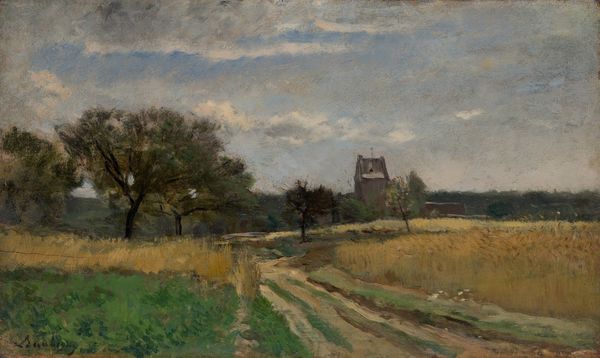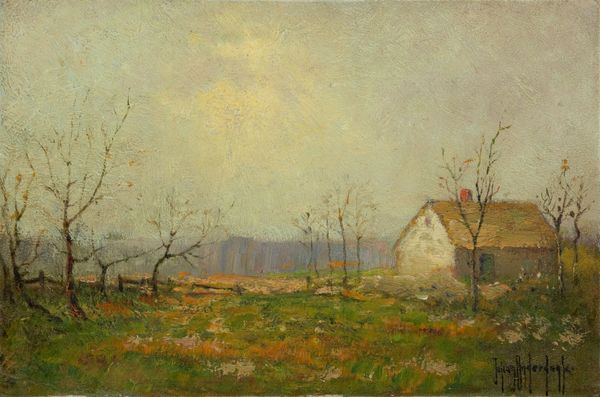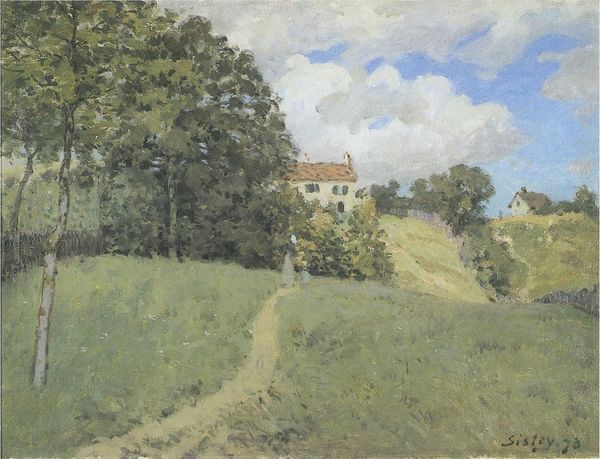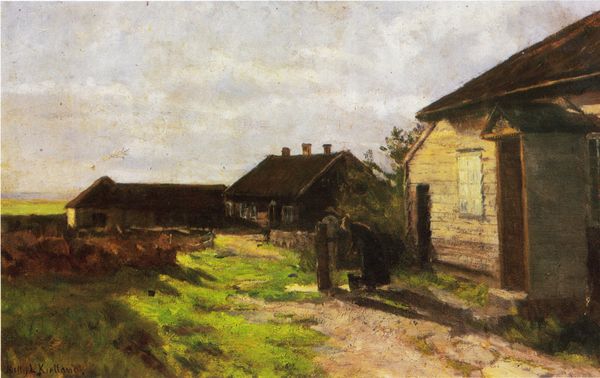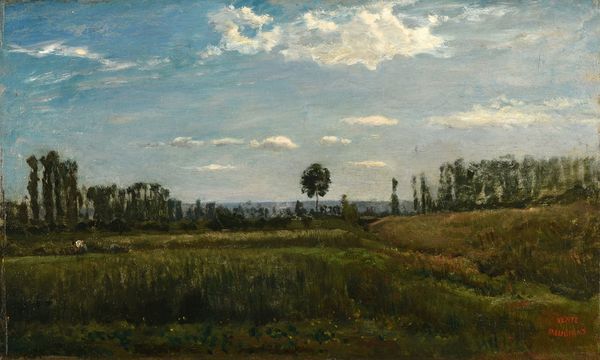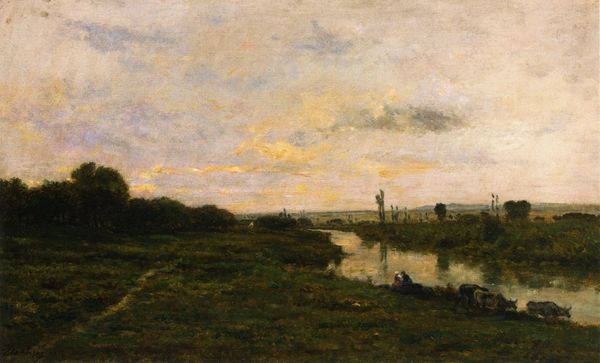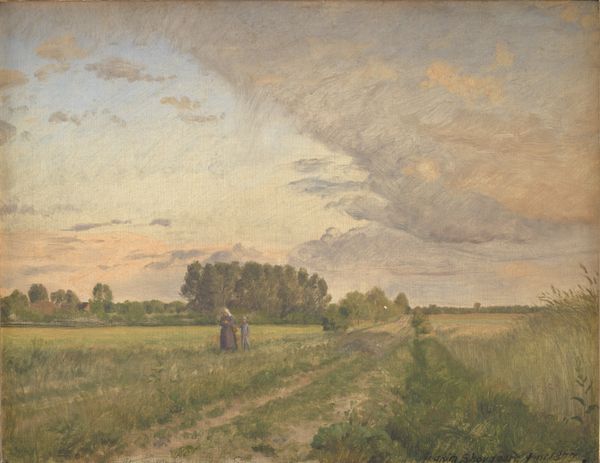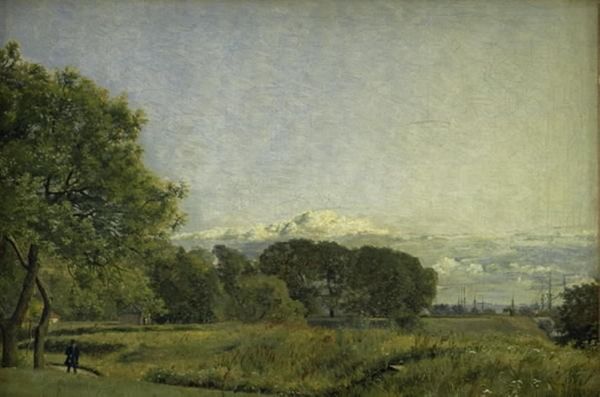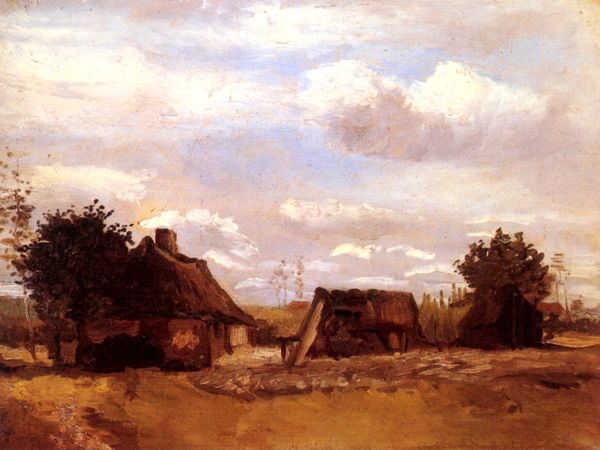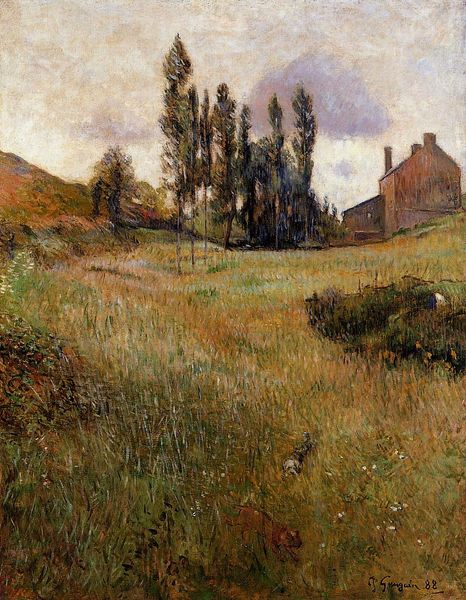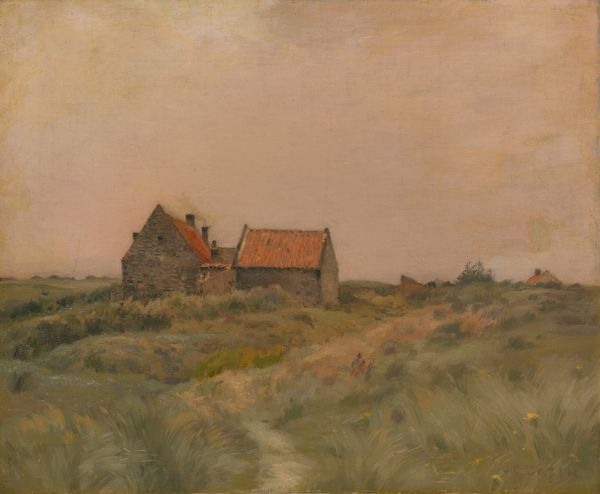
Copyright: Public domain
Curator: Well, this pulls me right into the countryside, a calming scene, no? It’s Damoye’s "Paysage Au Moulin" from 1907. It is an oil painting; a beautiful glimpse into rural France. Editor: You know, "calming" is a good word for it. But it is a calm that carries a touch of melancholy. Look at those brooding clouds, and the rather solitary, stoic mill. There is a story implied here, about rural labor and the passing of time. Curator: Maybe so. I’m drawn to how Damoye uses the light; how it bathes the landscape and softens every edge. You know, he was one of those artists who felt he HAD to be en plein air; immersed in nature to really capture it. I mean, can't you almost feel that wind, see the shadows dance? Editor: Absolutely. That dedication to working in the open air comes across strongly. But think about the broader context of the time; landscape painting served not just as a depiction of nature, but as a symbol of national identity, particularly in the wake of rapid industrialization. Paintings like this one provided a yearning for a simpler way of life, while also acknowledging the changing nature of rural labor with industrialization. The mill then stands not only as the focus of labor, but also of lost culture. Curator: Oh, I can see that. Like a quiet resistance captured in oil. It's clever. The way Damoye focuses the mill but doesn't glorify it – but sees it instead. It's quite something when art becomes that mirror reflecting the deeper socio-political feelings of a whole country at the turn of a century, right? Editor: Indeed. The impressionistic brushstrokes make it appear effortless, yet every detail seems deliberately placed to create this tension between tranquility and a sense of historical awareness. That horizon line cuts low, leaving that tumultuous sky dominate and really shows us that everything shifts… that calm isn't a given, it is the light you shine on things. Curator: True. It really leaves you with much more than just a pretty view; it asks a question. Now that’s something worth standing here and pondering for a moment. Editor: Precisely. It makes us consider how we look back, how we shape these landscapes, and what truly persists beyond appearances.
Comments
No comments
Be the first to comment and join the conversation on the ultimate creative platform.
